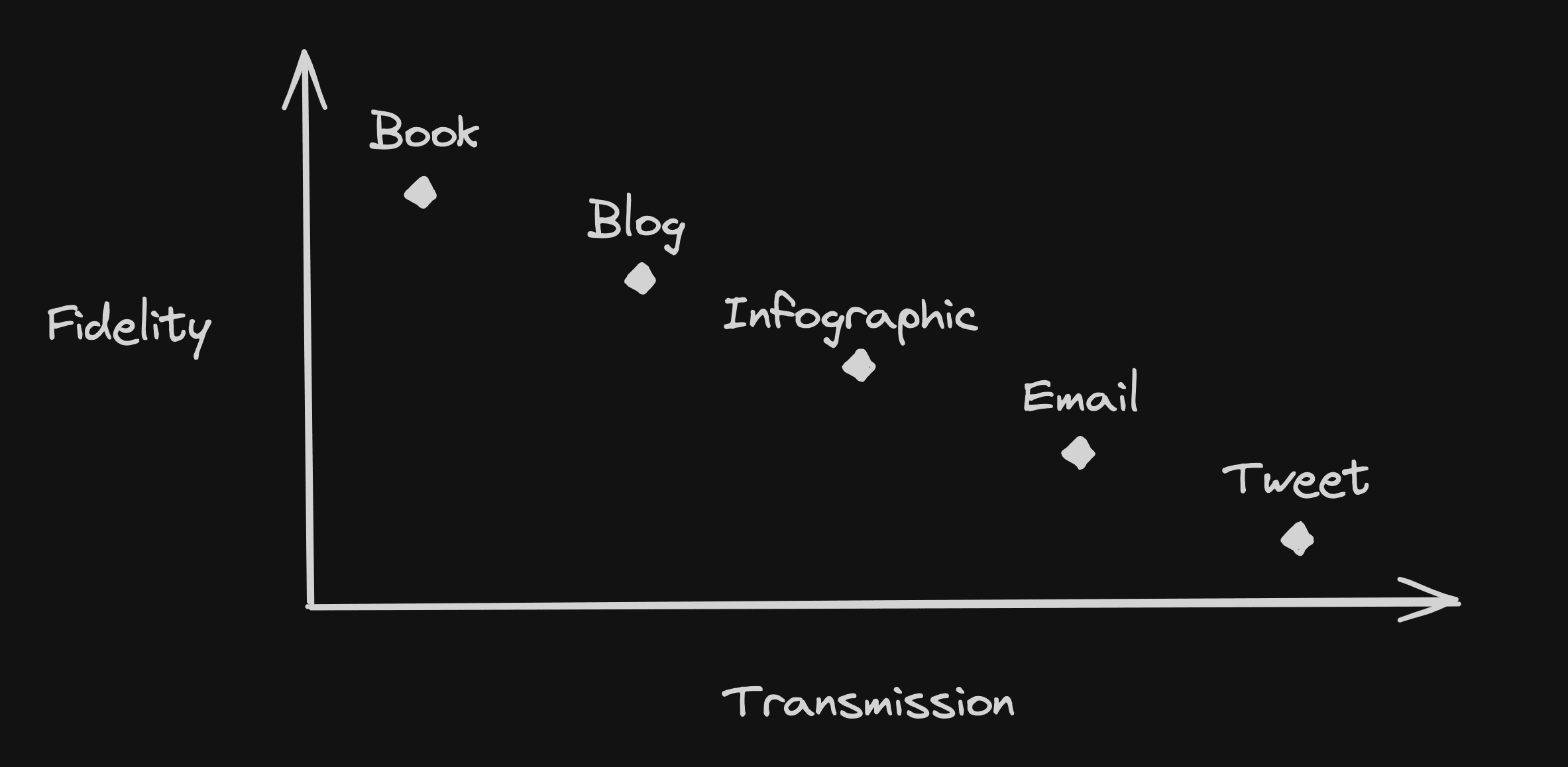Thoughts on Information Fidelity and Transmission
Rich, complex ideas can have more impact — but they won't travel as far as a simple idea.
There is a useful axiom to keep in mind whenever you are crafting a message for someone else, whether writing a book, filming a video, or drafting an email.
Simple ideas travel farther than complex ones
Most of us intuitively understand this. But sometimes we forget as we get into the details of whatever we are doing. That’s why I like to keep the idea of fidelity vs transmission in mind.

A book has hi-fidelity, but low transmission. You can read an author’s ideas in depth. Everything they wanted to tell you is there. But the full message — the text of the entire book itself — will practically never be remembered or transmitted, in detail, to the recipient. They may highlight the text, take notes, and summarize the text. But the full message will be lost.
In contrast, a social media post has lo-fidelity, but high transmission. The full idea is almost invariably reduced to its essential elements. Details are left out. Things become black and white. But the recipient might be able to remember the entire message, so it has high transmission.
This is why slogans are so powerful. They are easy to remember, and collect associations with other information you might have received or interacted with about a brand, politician, or idea. But they don’t have to communicate the whole thing – the recipient fills in the rest.
Why does this matter?
There is an inherent tension between fidelity and transmission in all communication. Too much information, and your audience won’t remember what you needed them to know. Too little, and the message becomes banal, or simply worthless.
There is an ethical element to navigate as well, especially when reporting or documenting someone else’s experience. Storytelling is reductive: it removes and flattens details in favor of creating an understandable narrative. The details you include or leave out will shape an audience’s understanding of the message you are communicating.
What does this look like in practice?
Practically, this is why most messaging frameworks provide multiple tiers:
- Pillars — Simple, two or three word phrases
- Key Message — Short, memorable statements
- Proof Points — supporting statements, benefits, or other evidence
From here, you can expand into even higher fidelity forms like blog, videos, white papers, or books that expand and build on the summary provided by the messaging framework.
Closing Thoughts
We see the impact of this all the time. Stories go viral based on a bit of sensational news. But as the details come out, the original story turns out to be false. Bias and hate travels farther and faster than the nuance of compromise and collaboration.
As a writer, marketer, or anyone who works with words, how do you balance fidelity and transmission in your work?